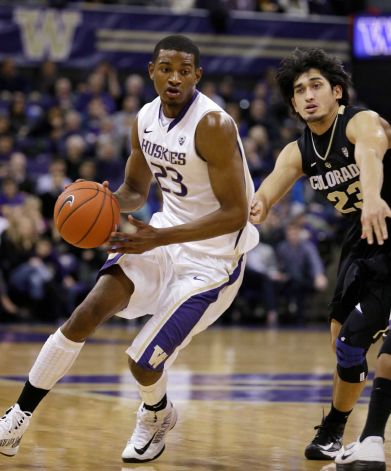Assessing the Season: West Virginia Mountaineers
Posted by KoryCarpenter on April 23rd, 2013Heading into the season, you could have argued that West Virginia had a better talent and coaching combination than eight or nine teams in the Big 12. They returned a number of talented sophomores who seemed poised for breakout years, led by Keaton Miles (30 starts as a freshman) and Jabari Hinds, who started all 33 games as a freshman while averaging 7.4 PPG and 2.5 RPG. Gary Browne (6.5 PPG, 3.4 RPG) wasn’t bad, either, and expecting the trio to see big jumps in production after a year adjusting to the college game seemed fair. The Mountaineers also had a pair of talented Atlantic 10 transfers who would be eligible in guard Juwan Staten and center Aaric Murray. As a freshman at Dayton in 2010-11, Staten had led the Atlantic 10 in assists with 190 while starting all 34 games for the Flyers. In two seasons at La Salle, Murray had climbed all the way to No. 2 on the school’s all-time blocks list with 143. His 15.2 PPG, 7.7 RPG, and 2.3 BPG averages as a sophomore led the team, and it was obvious he should try his luck on a bigger stage. Then there was the bull on the block, senior forward Deniz Kilicli, the 6’9″, 260-pound forward who averaged 10.7 PPG in 2011-12.
As you can see, future Hall of Fame coach Bob Huggins had a talented roster heading into this season. But with that talent came a lot of question marks. Would the freshmen take that next step? Would the transfers adjust to stiffer competition in a major conference? Would there be program growing pains in their first season in the Big 12, a conference in which their closest road game (Iowa State) was nearly 900 miles from home?
As it turned out, Miles couldn’t get on the floor, averaging only 2.6 PPG. Browne shot only 32.5 percent from the field with 5.2 PPG, and while Hinds’ average stayed at 7.4 PPG, his shooting percentage plummeted from seven points to 35.1 percent. The transfers Murray (8.8 PPG, 5.9 RPG) and Staten (7.6 PPG) were good but not great. Perhaps the only pleasant surprise this season was freshman guard Eron Harris, who led the team with 9.8 PPG. It was a roster made up of many different pieces that never came together, and that may have been evident as early as opening night.
Highs


















































